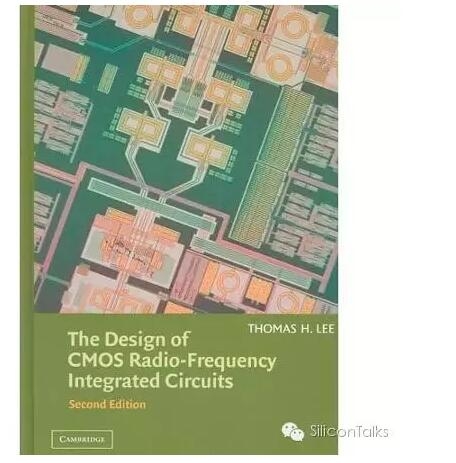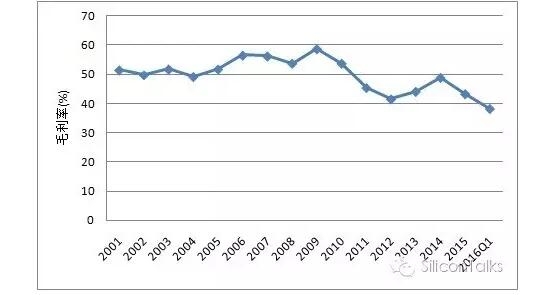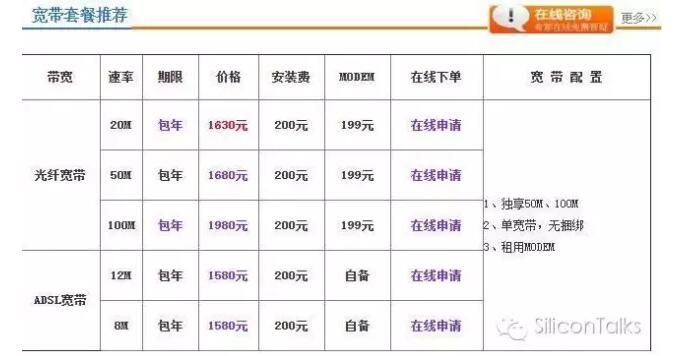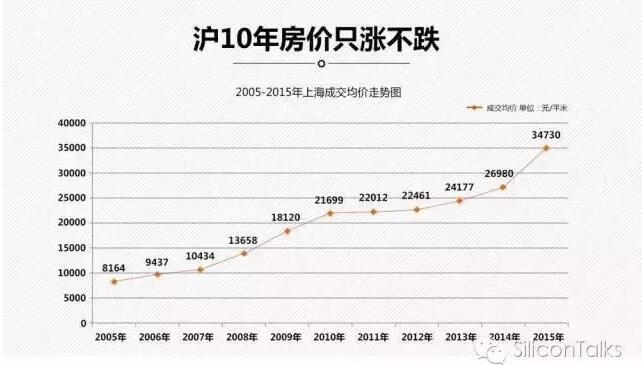Lei Feng network: Author Li Yilei, author of this article, UCLA doctoral student, Qualcomm (RF group) trainee engineer, said (micro signal: silicon_talks) master pen.
| It's also burgundyRecently, a Qualcomm senior technical manager chatted with me about the ups and downs of radio frequency integrated circuits in the past ten years. He said that during her Ph.D. in the United States (at the end of the 1990s), she did not even have a complete RFIC textbook. At that time, how to do RF circuits was entirely on her own. After graduating, he came to Qualcomm and witnessed the boom of the RFIC industry ten years ago. Then in the twinkling of an eye, RFIC became the future. The number of new people willing to do this is decreasing. The elderly are worried that they will not be Layoffs. "It's too fast, that is, more than ten years," he exclaimed.

Large phone using discrete device radio was once a symbol of fashion
The change in the RFIC industry over the past decade is indeed a sea of ​​mulberry fields.
The time went back to the 1990s. Big Brother had to spend more than 10,000 yuan in China at that time. Consumers at that time would not have thought that we could use a cheap and affordable mobile phone today. At the time, the RF circuits in the handset were still built using expensive discrete devices. Few people would expect that we could implement RFIC in a cheap CMOS process to integrate all the devices on a single chip. Even when the 2G GSM standard was formulated, there was no consideration of the CMOS RFIC, so that the phase noise index in the GSM standard was particularly harsh for CMOS circuits.
(Twenty years later, although the feature size of CMOS ICs has been reduced from 500 nm to today's 16 nm according to Moore's Law, the phase noise specifications of GSM transceivers still need to be carefully optimized to satisfy!)
In fact, the CMOS RFIC really faced difficulties at that time.
For example: How to implement high-performance on-chip inductors? How to implement a low noise amplifier with a CMOS device with poor noise performance? How to realize high-frequency oscillator with CMOS devices with relatively poor carrier mobility?
However, as the hero of the times, a group of CMOS RFIC pioneers have done a lot of beautiful work and solved most of the problems of CMOS RFIC.
For example, Patrick Yue of Stanford (later co-founded by Atheros, currently a professor at HKUST) and Ali Niknejad of UC Berkeley (now still a professor at UC Berkeley) achieved high-quality on-chip inductance of silicon-based chips, Ahmad Mirzaei of UCLA. (At present Broadcom, also the author Mentor) and Asad Abidi implement a wideband CMOS on-chip oscillator, Stanford's Derek Schaeffer (currently at Apple) and Thomas Lee tell you how to implement low-noise amplifiers using CMOS, and announced that with the CMOS feature size Reducing the amplifier's noise figure will make it better!
The revolution of CMOS RFIC has revolutionized the cost-effective handsets into millions of households and promoted the prosperity of the semiconductor and communications industries.

Thomas Lee's classic textbook published in 2003 also witnessed the golden age of RFIC
Today, the predecessors of the RFIC industry still relish the grandeur of the time.
In the United States, at the beginning of the 21st century, the dotcom bubble burst. At that time, there was no digital cultivator working on his own circuit and he wanted to switch to an analog/RF circuit (“Analog/RF circuit became more popular and Coding was more youthfulâ€. This is exactly what happened at that time. This is similar to how many IC engineers now brush their leetcode to switch to a computer while they are at work! When the communications industry is hottest, a Ph.D. graduate student who is doing machine learning still needs to self-learn Viterbi algorithm and other communication algorithms in order to be able to enter Qualcomm. At that time, the circuit design company grew wildly and was extremely short of people, so that some engineers who had no circuit background were able to enter the design company to do layout design after training for some time!
In China, foreign companies with circuit design have just landed in first-tier cities and are hiring people with circuit-related backgrounds on a large scale. At that time, Chinese housing prices have not yet risen. In the golden period of that radio frequency circuit, a person who graduated from a master's degree who had done LNA circuit simulation during the postgraduate study can easily enter foreign companies and get a monthly salary of 10,000 yuan per month. At that time, the average new house price in Shanghai's inner ring was even less than that. Every square meter to 10,000! (Now, the RFIC Master's salary for foreign companies is still about 10,000 per month, but the price of new homes in Shanghai's Inner Ring has exceeded 60,000.)
At that time, everyone was optimistic about the future. The periodic update of communication standards (2G->3G->4G...) will promote the need to meet the new standard RFIC, and as the CMOS feature size shrinks, the performance of RFICs will become better and better, opening up new application markets. Therefore, the RFIC industry can completely follow the Moore's Law as the CPU, the market will grow bigger, and RF engineers will become more and more popular as they get more and more experienced with age.
However, reality is not as good as expected. Although the performance of RFIC has been progressing, the profit margin is getting lower and lower. Qualcomm, Broadcom, and other industry giants have combined layoffs to save costs. The days of RFIC engineers are getting more and more sad. Many people even brush up at work and want to switch programmers.

Industry giants MediaTek gross margins trend, the era of 50% gross margin can not go back
| Reality of RFICSo why is RFIC so much worse than reality?
In order to answer this question, we first need to analyze the needs of consumers . If consumers are directly asked about the RFIC's demand, they may be too abstract, so we may wish to consider the consumer's demand for wireless communications.
Taking WiFi as an example, WiFi connection speed has increased from 2Mb/s for 802.11b to 100Mb/s for 802.11ac today. However, you readers may wish to ask yourself, if you change your home WiFi from 100Mb/s to 2Mb/s today, will you feel a huge difference? Maybe look at your home router. Have you used it for many years? For basic work and entertainment (online chat, watching videos), 2Mb/s wireless connection speed is enough.
Online games are required for the speed of the Internet, but their requirements are mainly low delay (that is, the route from the remote server to the local route) rather than high bandwidth. The bandwidth of 2 Mb/s is sufficient to run most networks if the network is smooth enough. game.
This is why when playing a game network card, players tend to complain about Internet spam, but no one ever goes to Zibo Express's wireless network card. The only requirement for bandwidth is downloading, but the current download speed is only a very small part of the overall user experience. After all, the number of people who do not download uncomfortable is not large. After all, the demand of consumers for wireless communication speed has not increased exponentially in a decade. How can one expect the wireless communication hardware (including RFIC) market to grow exponentially?

The 802.11ac standard WiFi already supports 100Mb/s, but 8Mb/s China Telecom broadband still needs 1580 yuan/year in 2016. What's the use of 100Mb/s WiFi when the upper bandwidth is only 8Mb/s?
| Upstream and downstream companies cannot form a joint effort to tap demandSo why is the consumer demand for wireless communication speed growing so weak? The underlying reason is that the upstream and downstream companies in the industry have not formed a joint effort to tap the needs of consumers. The needs of consumers are often hidden in the underground underground.
A good example is a touch-screen mobile phone. No one before the Apple iPhone launch will think that consumers have such a large demand for touch screens. After Apple introduced the iPhone, the entire industry has undergone a revolution, from the upstream software industry to the The downstream touch screen hardware (including the screen and driver ICs) has embraced this brand-new human-computer interaction model and gained a lot of profits. It can be described as a model for excavating consumer demand for money.
Another example of upstream and downstream companies working together to drive consumer demand is the PC. Consumers’ motivation for upgrading PCs not only comes from hardware enhancements and improves the user experience (processor chips are more memory-heavy), but also comes from software requirements (operating system Updates, software version updates, and new games all require more hardware.) Ten years ago I had bought a PC, the main purpose is to run WinXP open Office chat QQ Internet access to see the news. At the time, I faced a computer that was extremely smooth and thought, "I use this computer to play games without running large software, and it should be OK to use it for ten years." It turned out I was too Naive, I can ignore the Windows update, the new colorful game I can not play, but Internet-related applications forcing me to change the computer I can not resist .
QQ will upgrade every time the computer will be a little card, but will not upgrade QQ for a long time because the version is too old to land. The same is true for the Internet. As Flash and html5 technologies continue to update webpage effects, they are getting better and better, but the memory and CPU are also getting more and more. Now it takes a few hundred megabytes of memory to open a Gmail mailbox, which was more than a decade ago. It is impossible to imagine a memory configuration of only 512MB.)
In the end, I also had to buy a new computer. This is an example of how the upstream and downstream companies work together to drive consumer spending.
However, in the field of wireless communications, upstream and downstream companies have not formed a concerted effort, and the cautious attitudes of the upstream and downstream companies may sometimes hamper each other.
For example, when 4G was just launched, news reports said that 4G can achieve a high speed connection of 50Mb/s. However, the most popular commentary under news is neither admiring the development of technology nor looking forward to the early use of 4G. Concerned that once you use 4G will not run out of traffic for a month!
In other words, consumers' demand for high-speed wireless communications is being stricken by the operator's high traffic charges! RFIC engineers in the upper reaches of the industry chain have thus been pitted by the older brother, the telecom operator.
Another example is WiFi, as long as you are still using China Telecom's small 2Mb/s bandwidth water, that 100Mb/s 802.11ac network card and router does not make much sense to me.
Naturally, App developers will avoid content that requires high network bandwidth when designing an app, and users will not realize the significance of a mobile phone supporting high-speed wireless Internet access because apps do not need a lot of network traffic. The result of this is that the wireless communication module corresponding to RFIC is less important in the mobile phone. As long as you can make a call and you can go on 4G-LTE, as far as you can support LTE is category 1 (10Mb/s) or category. 3 (100Mb/s) do not care, sometimes you make the connection speed of support too high, but consumers worry about the flow too fast!
So currently the mainstream mobile phone running on the market does not run wireless connection speed, and very few mobile phone manufacturers will use the Internet as a selling point. RFIC is thus marginalized.
In contrast, the same chip, Application Processor (AP) will be lucky. Mobile phone operating systems, apps, etc. are all around the AP. Consumers' most concerned about the mobile phone's index of “fast or bad†is also determined by the AP. Therefore, the AP also becomes a key module in various running competitions and is also the largest in mobile phones. The selling point. When all mobile phone manufacturers competed to run races, hype the “nuclear war†and cherish feelings, RFIC was mercilessly forgotten in the corner. Even the sleekness of mobile phones is more important for manufacturers and consumers than RFICs.

Domestic 4G tariffs are high, if you use 100Mb/s full speed download in less than 1 minute you can run out of 138 yuan packages. At this time, RFIC is doing a good job of network connection. Not only does it fail to get consumers' affirmation, it will cause the worry that "will run out of traffic once."
| Â Engineer's Blood and Tear Become Red in RFIC's Red SeaIn the case that consumers do not care much about the performance of wireless communication due to various reasons, the performance requirements of RFIC manufacturers are sufficient enough, "60 points is a waste of more than one million points." You have worked hard to improve the receiver's sensitivity by 3dB. As a result, consumers don't care. People with your chip's mobile phone makers won't use mobile phone signals to attract consumers. The only thing the chip designer can do at this time is cost down. This year, people of all kinds who have no technical background (do antivirus software, do video websites, teach English) can do mobile phones. Although these bosses do not know what chip targets, Renminbi still believes.
However, the cost down road is extremely cruel and it is difficult to turn back . In order to occupy the market share, he does not hesitate to cut prices to lower profit margins. In the final analysis, the injured enemy is injured by one thousand and he hopes to drive competitors out of the target market before he bleeds to death. Even more frightening is that in this war, the downstream mobile phone manufacturers have become accustomed to low-priced chips, and it is almost impossible to raise the price and increase the profit margin after trying to drive out the opponents. (The panel maker WinTek is a trap An excellent example of the inability to extricate yourself from the Red Sea.)
At present, MediaTek, Spreadtrum and other vendors have already played in this cut-throat battle. Now that even Qualcomm intends to compete in the low-end market, the mobile phone RFIC's Red Sea will only become more and more cruel.
Once it has gone down the cost down path, the RF engineer's treatment will be impossible . After all, the cost of manpower in the IC design is a very important cost, so the treatment of the chip must be down. Or, the salary on the surface of the engineers does not drop, but the length of work is elongated. For engineers, the feeling is that the working hours are longer and the income is not growing .
Most of our generation of RF engineers have stood by their own efforts to stand out among all students. They have been enrolled in the best high schools, universities and postgraduates. When studying for university and graduate students, it was RFIC’s hottest moment. So he took up the relevant profession without hesitation. However, the first-class Design House who entered the first-tier cities after ten years of cold weather wanted to live a happy and dignified life with his own efforts. At the time, it was found that the income from the work of 12 hours a day had already been depleted after deducting the mortgage.

The RFIC engineer’s income for a twelve-hour day's work has been depleted after deducting the mortgage
Where are the hopes for such days? In fact, there is still hope that the next growth point in the chip industry is new hope.
Where is the growth point? Please listen to the next decomposition.
Lei Feng Network (search "Lei Feng Net" public concern) Note: Reprinted Please be sure to contact the authorize and retain the source and author, not to delete the content.